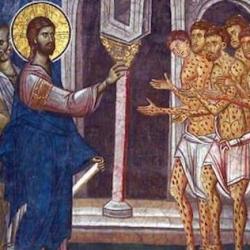In her contribution to The Peace of God, Amy Remensnyder examines the eleventh-century crackdown on simony, clerical marriage and unchastity, and the clergy’s involvement in war. These were characterized as pollutions of the clergy and the church, and the rules were framed as purity prohibitions.
Gregory VII denounced one simonist as a sexual pervert: “He dared to buy, as if she were a vile servant woman, the bride of Christ and to prostitute her to the devil. Trying to separate her from the catholic faith, he strove to stain her with the crime of the heresy of simony” (quoted 298-9).
This purity language spilled over into liturgical concerns:
Rather of Verona described elaborate provisions for the celebration of the mass. . . . canon 3 of the council of Coyaca [1050] prescribed the materials to be used in the fabrication of liturgical objects and the proper dress of the priest, ending with a distinct emphasis on the necessity of the physical purity of the sacraments themselves: ‘The host should be made from grain that is whole and healthy [sana and integra]. This is in order that the Trinity may be symbolized by the wine, host, and water. The altar should be properly clothed and on it should be a clean [mundum] linen covering. Above and beneath the chalice there should be a clean and unblemished [mundum et inetrum] corporal’.(299)















